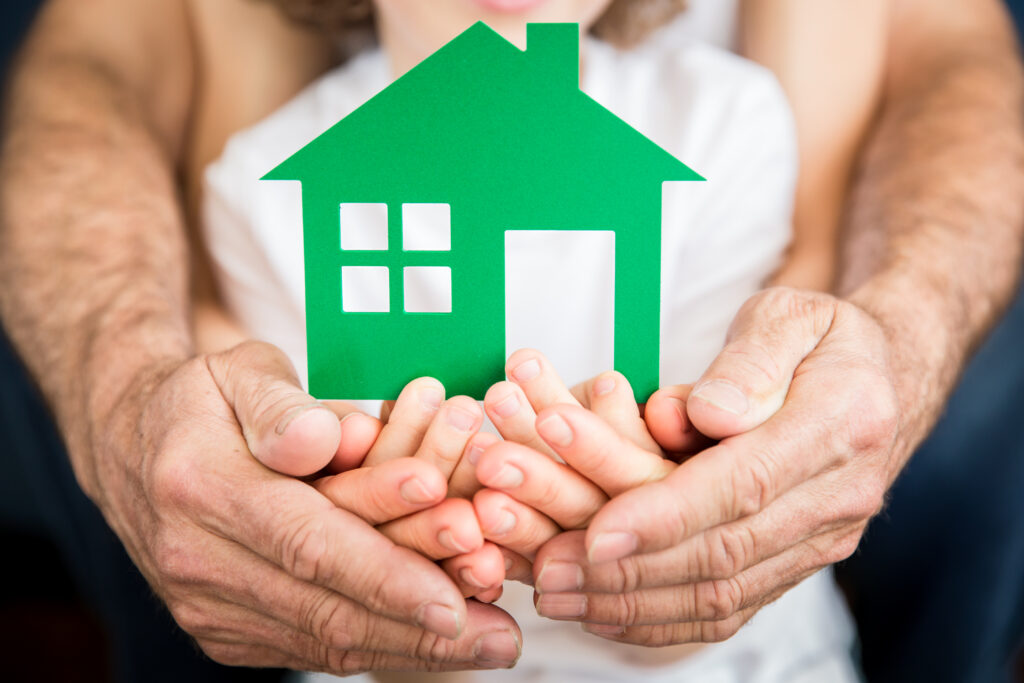If you are due for a home remodel, then you may want to consider choosing sustainable products for your family that are made from recycled materials. Home remodeling requires billions of tons of concrete, steel, drywall and other materials, all of which require a tremendous amount of energy to extract, transport and dispose of in landfills. According to the Environmental Protection Agency, construction has a major impact on the environment, causing greenhouse gas emissions; air, water and land pollution; energy and water consumption; and land and habitat loss.
Fortunately, the choices you make can help reduce waste and environmental impact. “Choosing recycled or reclaimed materials lowers the burden on our waste streams,” explains Jason Holstine of Amicus Green Building Center in Kensington, Maryland, a design center and home improvement store that screens products for health, environmental integrity and durability. “They also reduce the carbon footprint from sourcing, mining, transport, manufacture, and disposal of materials; help lower costs; support local jobs; and give you some great stories about your project. Plus, they look fantastic and make for a more personal and individualized space.”
“[T]he choices you make can help reduce waste and environmental impact … Get your kids and teens involved with helping to choose the most eco-friendly products [so] they will learn a lot about sustainability and how they can help make a difference.”
From cork floors and recycled glass countertops to decks made from recycled plastic bottles, there are plenty of options to stay trendy while minimizing your home’s environmental footprint. Get your kids and teens involved with helping to choose the most eco-friendly products. By taking them to showrooms and talking about the importance of recycled materials, they will learn a lot about sustainability and how they can help make a difference.
Here are some home-improvement products made from recycled materials to consider for your next project.
Flooring
Flooring is one of the easiest ways to green a home. One trend, according to Holstine, is to salvage wood from old barns, warehouses and horse fencing and turn it into decorative flooring. Just check that the old wood has been properly treated so that it won’t emit toxins into your home that can be harmful to your family.
Recycled cork is another option, as it is sustainable, moisture-resistant and absorbs sound. Cork is the perfect material for a playroom or other high-traffic area in your home where kids are running around and making a lot of noise. Companies like Jelinek Cork Group collect hundreds of thousands of used wine corks each year to develop versatile cork flooring. Finally, look for recycled carpet, which is relatively easy to find at local flooring and home-improvement retailers. Mohawk’s Everstrand line, for example, is made from up to 100% post-consumer recycled content.
Paint
Using nontoxic paints is critical for protecting infants’ and children’s health, including their developing respiratory, endocrine and neurological systems. For years, companies like Sherwin-Williams have been producing water-based paint from recycled bottles and soybeans, safer chemical building blocks according to the Environmental Protection Agency. For example, Amazon Select Paints are eco-friendly latex paints made from recycled surplus paint collected from government buildings, businesses and consumers. Recolor is another company that offers premium quality recycled paints by collecting unused paint that is otherwise destined for the landfill.
Countertops
With a number of companies offering eye-catching countertops made from recycled materials that can withstand the wear and tear of an active family, it is easy to go green in the kitchen and bathroom. IceStone creates stunning countertops made from recycled glass, Portland cement and nontoxic pigments. “This product offers a bright and vivid look that sets it apart from the typical stone or veined look,” notes Holstine. The company also has a product called PaperStone, which is a heavy-duty, nonporous surface made from 100% post-consumer recycled paper coated with a petroleum-free resin.
Vetrazzo and Curava also offer unique-looking, dramatic countertops made from pre- and post-consumer recycled glass, including old traffic lights, jars, windshields from cars and architectural glass.
Deck
A popular alternative to wood decking is recycled plastic, and there are plenty of choices on the market. TimberTech claims to keep 500 million pounds of waste and scrap out of landfills each year with their environmentally sustainable outdoor living products including decking. NewTechWood builds decks using 95% recycled materials, including plastic bottles and reclaimed wood fibers. Trex combines reclaimed wood with recycled plastic film and other recycled components ranging from dry cleaner bags, sandwich bags, newspaper sleeves and shopping bags.
Pavers
Show off sustainability to the neighbors by choosing recycled pavers for your driveway and pathways. Aspire Pavers are made from up to 95% post-consumer recycled tire rubber and plastics and can be used for a range of different projects. FILTERPAVE uses post-consumer recycled glass and stone aggregate to produce attractive porous pavers in a variety of colors.
Roof Shingles
Need to replace a leaky roof? A few innovative companies are manufacturing roof shingles made of recycled materials. Malarkey Roofing Products makes roof shingles by upcycling rubber and plastics. According to their statistics, each roof diverts the equivalent of about five tires and 3,200 plastic bags from landfills. GAF, a Standard Industries company and the largest roofing and waterproofing manufacturer in North America, offers the industry’s first asphalt roofing shingles containing recycled material from post-consumer and post-manufacture waste shingles.
Sandi Schwartz is an award-winning author, freelance journalist and mother of two. She has written extensively about parenting, wellness and environmental issues. As the founder and director of the Ecohappiness Project, her mission is to inspire and educate families to build a nature habit to feel happier and calmer. She is the author of the book Finding Ecohappiness: Fun Nature Activities to Help Your Kids Feel Happier and Calmer, and the children’s book, Sky’s Search for Ecohappiness.

